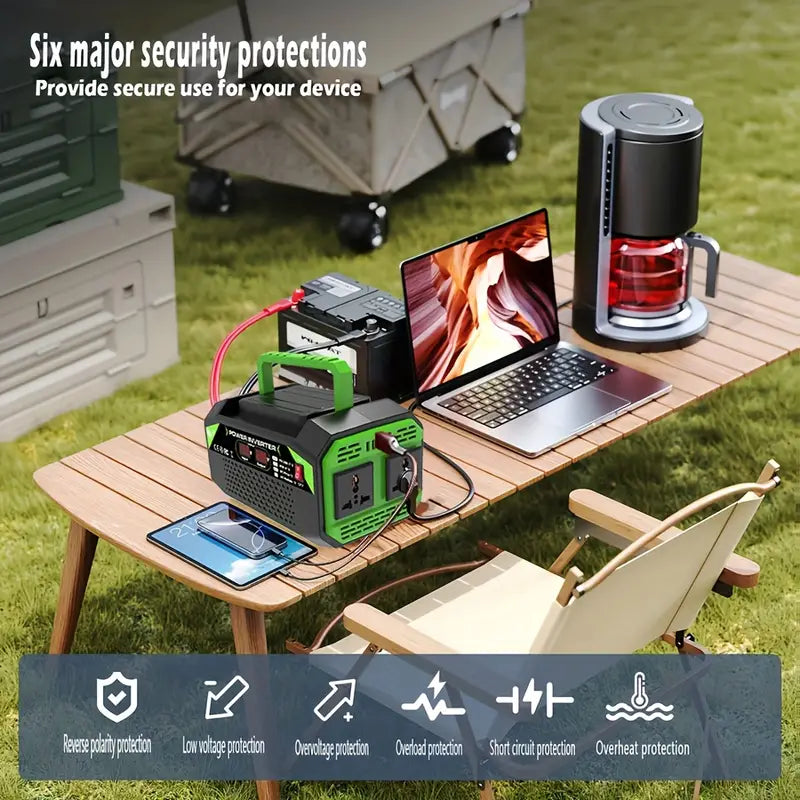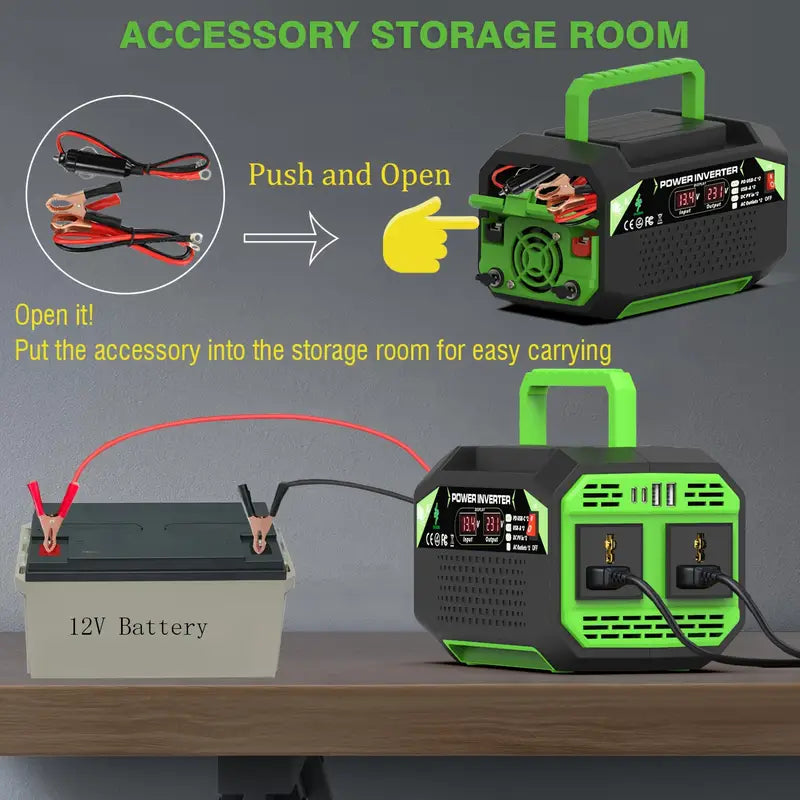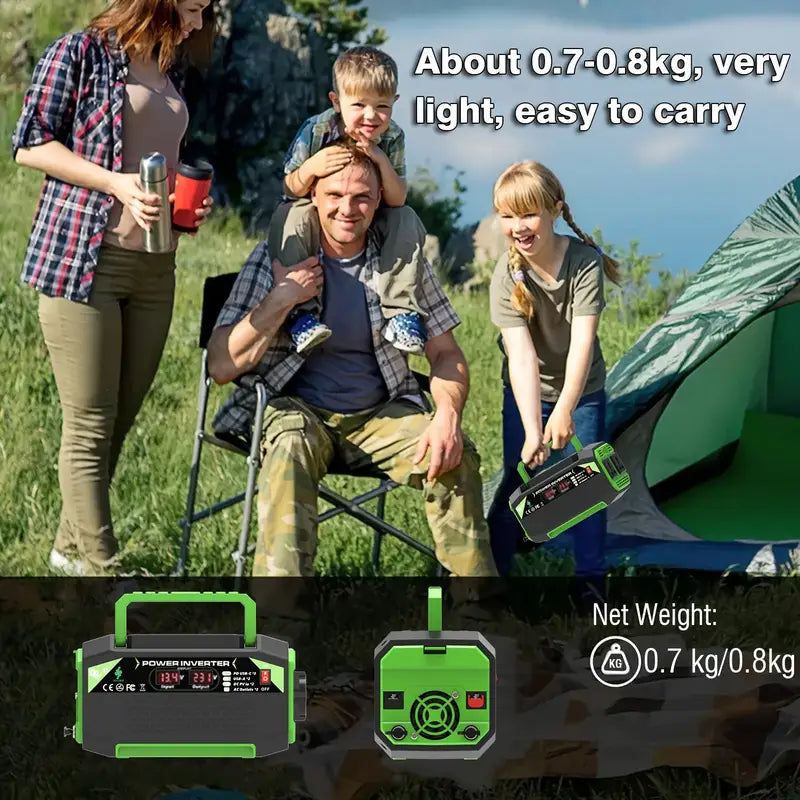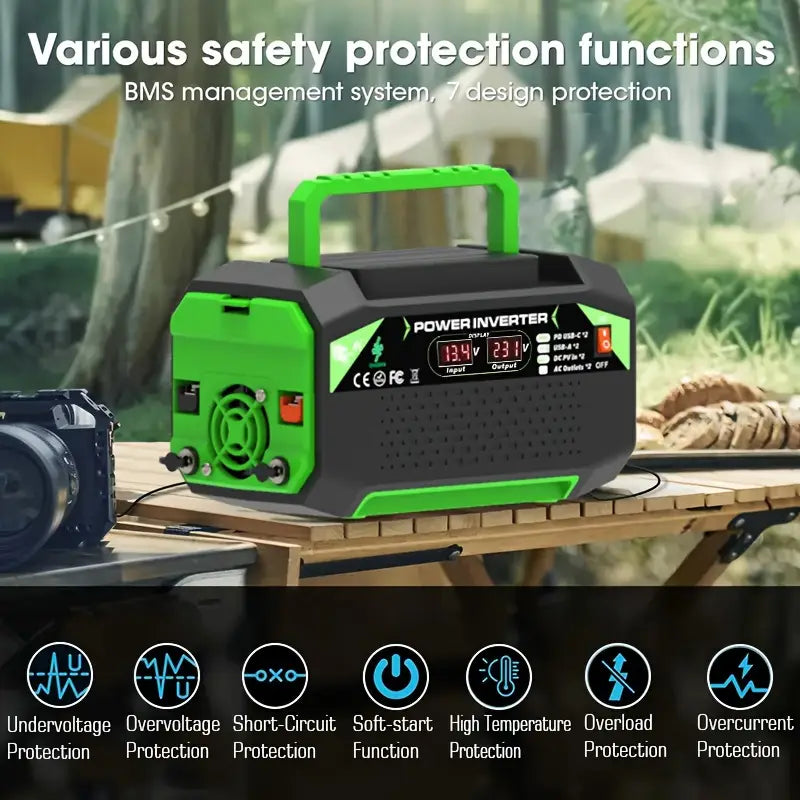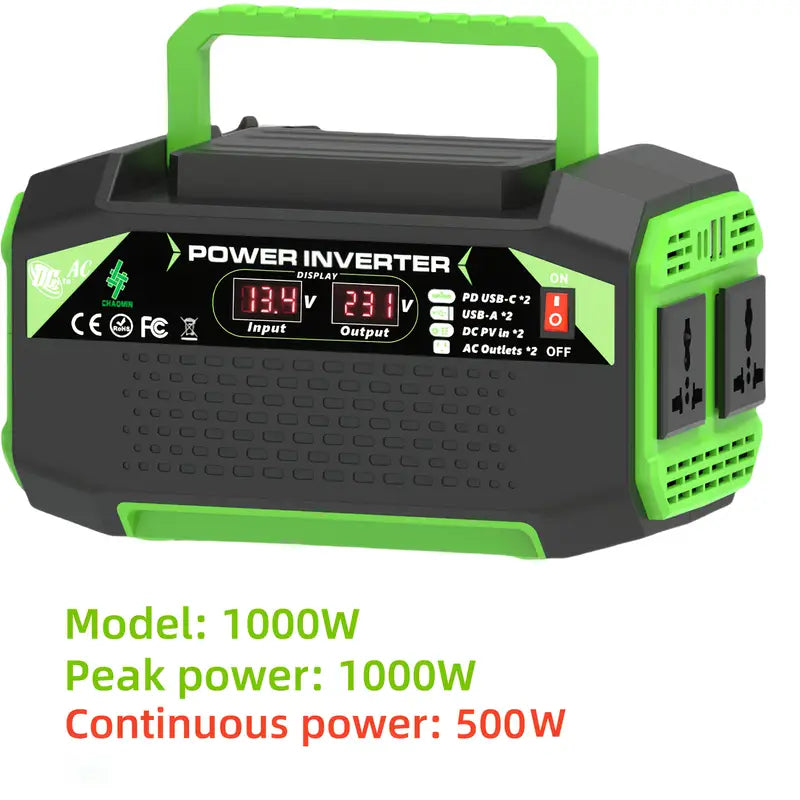
1000W Power Inverter, DC 12V to AC 220V/230V Convert Voltage
🔥 Almost sold out: 90% of stock sold!
Who Needs a Solar Charge Controller?
All off-grid solar systems require a solar charge controller to regulate the energy moving to and from the batteries.
You won’t usually need a solar charge controller for grid-connected renewable energy systems. The utility company gathers any excess energy produced and utilizes the electricity.
When Should You Use a Solar Charge Controller?
Almost all solar systems that utilize batteries will require a solar charge controller. Tiny solar setups are the only exception — 5-watt trickle chargers and similar devices will not need one.
For example, many golf cart owners will keep their batteries charged over winter with a small panel. This setup does not need a charge controller between the panels and the golf cart batteries.
If you are hooking up a full array of 400W panels, you will need an adequate solar charge controller (likely of the MPPT variety).
Some solar solutions already have a built-in charge controller, such as the EcoFlow Portable Power Stations. The controller, batteries, inverter, power outlets, and everything else are part of the power station — you just need to add the solar panels.
How to Size Charge Controllers Correctly?
Solar charge controllers come in various sizes for arrays of varying voltages and currents. Choosing the wrong one can lead to power loss and inefficiency.
First, you’ll want to check the voltage rating on the charge controller. Most PWM controllers are rated for 12 or 24V, while MPPT controllers can handle 12, 24, 36, and 48V systems. Robust off-grid energy solutions like EcoFlow’s Power Kits come with an MPPT charge controller and 48V battery (or batteries) built-in.
Most charge controllers have an “amps” rating. Smaller PWM controllers may be rated at 10, 20, or 30 amps. MPPT controllers are often rated at higher amps — 80 or 100 amps are common — to accommodate larger PV arrays.
To determine the potential amps that a solar array can output, we need to make a simple calculation:
Amps = Watts / Volts
Let’s say we have an 800-watt array running at 12 volts. We can plug these numbers into our equation:
Amps = 800 watts / 12 volts = 66.67 amps
The system could produce up to 66.67 amps. A charge controller rated below this amount can overload and malfunction. For this example, you would want a charge controller rated at 70 amps.
You’ll also want to check that your batteries are compatible with the charge controller. Lithium-ion and lead-acid batteries utilize different technology. Most controllers are designed for one battery type or the other.
Control Set Points vs. Battery Types
Most charge controllers operate at different voltages depending on the current state of the battery. For instance, a PWM controller may charge the battery most of the way, then reduce the voltage for a final trickle charge. The level at which the controller changes voltage is called a control set point.
Different battery types require varying methods of charging. Lithium-ion batteries utilize a three-stage charging system: precharge, constant current, and supplementary.
The precharge stage uses a low current for batteries that are nearly dead. Then, the constant current stage provides a steady supply at full power. Finally, the supplementary stage keeps the lithium battery at maximum charge.
Lead-acid batteries utilize three main charging stages: bulk, absorption, and float. The bulk stage sends maximum power to the batteries until they hit around 80-90% capacity. For the absorption stage, the current begins to drop. Finally, the float stage provides a trickle charge to keep the batteries topped off.
Why Are Displays and Metering Important?
Many solar charge controllers now feature an LCD. The display allows the user to monitor essential system vitals, such as battery charge percentage, current voltage, and time remaining on the battery at the current load. Some basic controllers for smaller systems will omit the LCD screen as the information may be unnecessary.
Other systems like the EcoFlow DELTA 2 have intelligent monitoring and smart app control. The in-built metering system lets you see the input and output levels of the battery and other critical information, including the battery’s vitals, charge time, and more, all on the smartphone app.
Understanding Control Set Points vs. Temperature
The temperature has a significant effect on battery charging. The energy in batteries flows with more ease while in warm temperatures. The battery has a harder time moving energy around as it gets colder.
Most control set points are set for room temperature operation. Temperature compensation is featured in most charge controllers to adjust the voltage for various temperatures. Some controllers have built-in temperature sensors, while others utilize a remote sensor.
Some charge controllers even allow for custom set points based on temperatures. Battery manufacturers each recommend a different adjustment based on the temperature, so this feature enables the homeowner to dial in their system.
Common Features and Settings on a Charge Controller
Charge controllers for residential applications will almost always have an LCD to convey essential information. Many controllers will allow custom set points to work well with your battery bank and climate.
Most charge controllers have built-in protection against reverse polarity, overload, short-circuiting, and other standard electrical issues.
Advanced technologies integrated into premium controllers will even allow remote monitoring on a smartphone and Bluetooth operation. Software like the EcoFlow smart app enables you to manage these features from a smartphone.
Conclusion
Building your solar system can be challenging, as it requires you to understand the basics of electricity. However, putting the system together is manageable once you learn the essentials.
A solar charge controller is at the center of your solar system. It bridges the gap between your PV array and your battery bank. Make sure you choose the correct controller to prevent any issues down the line.
All-in-one solutions can be helpful if the electrical jargon is too much for you. The EcoFlow Solar Generators and Power Kits are a great way to switch to solar, with a built-in MPPT controller and smart app to make metering and regulating your energy use even easier.
Frequently Asked Questions
You always need a solar charge controller if you are installing an off-grid solar system with batteries. Only the smallest panels — such as 1 or 5-watt trickle chargers — can operate without a controller.
You do not need a solar charge controller for grid-tied residential systems. Instead, the utility grid regulates the electricity flow and absorbs the excess power.
A 100W panel needs a solar charge controller if it is supplying a battery. Many small solar systems utilize just one 100-watt panel and a single battery. This system would require a charge controller to regulate the current that travels into the battery.
A 7-watt solar panel does not require the use of a charge controller. These panels allow low-voltage trickle charging, which does not need regulation of the electrical flow.
